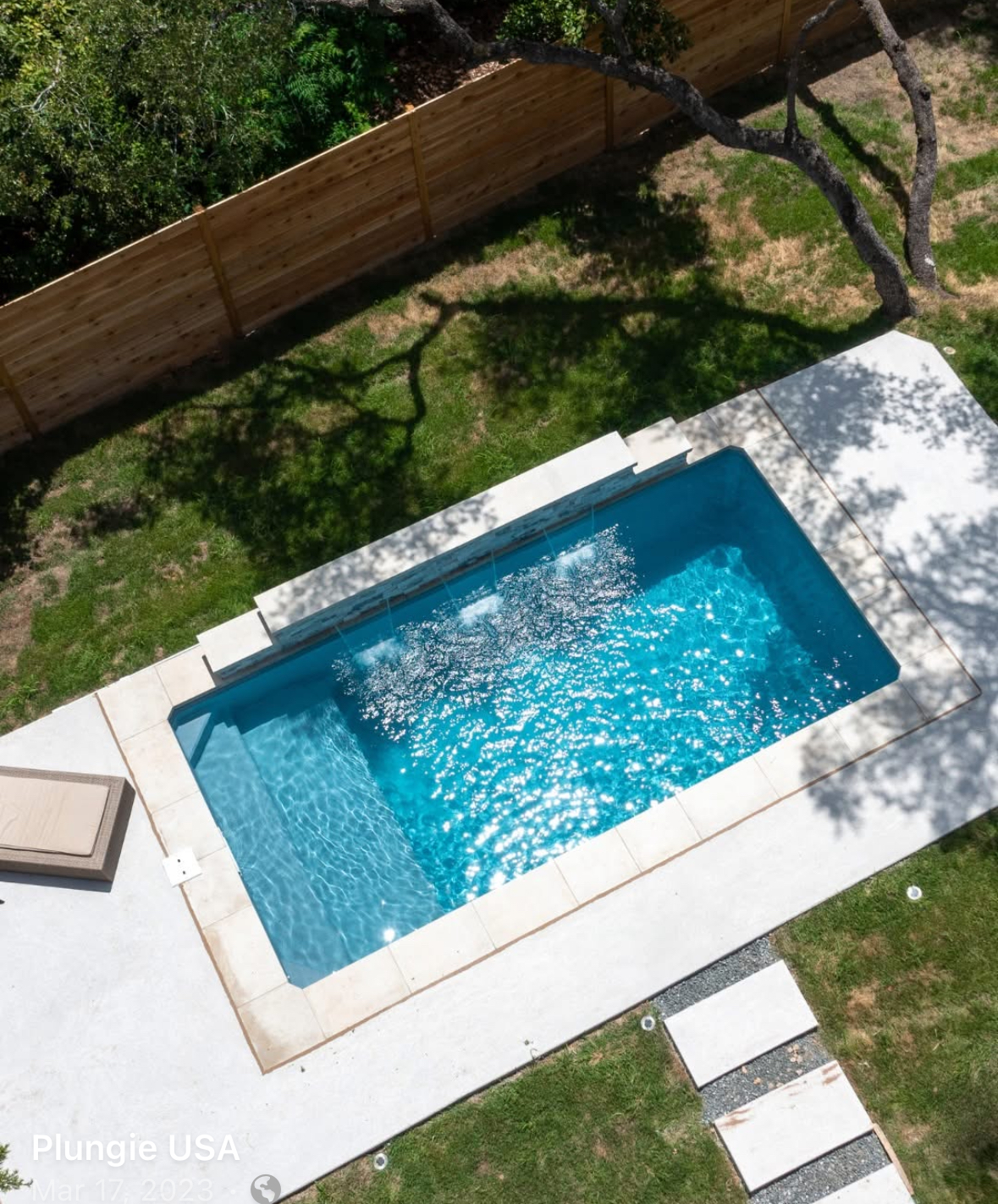Most pool builds begin with a design. This one begins with the ground.
Every property has physical constraints such as slope, setback, utility runs, and tree coverage. These define what’s possible. A successful build does not ignore those limits. It works within them to deliver something lasting.
This approach builds a pool that fits the space, not one that forces the space to conform. The layout, material selection, and timeline evolve from the terrain instead of trying to override it.
Installing a pool is more than a construction project. It represents a full reshaping of the property that holds up long after the forms are pulled and the concrete is dry. Every decision, from layout to systems to finish, has to be made in response to the conditions on-site. That means knowing what the ground allows, how the access works, and where each piece of the process fits into the space. This guide walks through the full construction path, showing how each stage is shaped by the one before it.
Ground Evaluation as Design Constraint
Some backyards are flat, some are terraced, and others run at an angle that reshapes every assumption. Ground evaluation starts by identifying what kind of design the site demands. It’s a decision-making process based on terrain realities rather than a test of feasibility.
Grade checks, setback measurements, and access evaluation come first. A narrow gate or large tree root system may not prevent the project, but it will change how it is built. For example, deep excavation in clay behaves differently than sand and requires modified footings.
Utilities also shape the blueprint. When sewer lines, water mains, or buried electrical lines cut through a site, layout adjustments are mandatory. Every pipe location, machine path, and drainage pattern leaves its fingerprint on the final shape.
This approach avoids problems before they are poured into place.

Excavation and Foundation Steps
The process begins with a cut path: layout strings, slope stakes, and dig markings. Crews shape the pit in layers, removing spoil as they go. The floor and walls are contoured to match the planned structure.
Steel rebar is tied into a grid and raised with spacers to ensure full concrete coverage. At this point, plumbing and electrical conduit are installed. Drain lines, skimmers, jets, and light boxes are placed and pressure tested before shell work begins.
Concrete is then sprayed and shaped directly over the frame. This shell holds everything. If it is off by an inch, the coping will not align. If plumbing shifts during pour, features will not function properly. The entire system has to move like one machine.
This stage is kept in-house. There is no trade rotation and no contractor handoffs. The dig, steel, plumbing, and shell are managed by one team.
Shell Options Compared
Choosing between a custom-formed shell and a precast structure depends on what the yard can handle and what the timeline demands.
Shotcrete Format
This is formed onsite, shaped by hand, and customized to fit the exact build space. It supports curves, integrated spas, benches, and vanishing edges.
Best For
Yards with irregular shapes
Projects needing depth transitions
Clients looking for unique geometry
Precast Format
Delivered fully formed, cured, and ready for crane placement, these pools simplify the install phase while maintaining strength and clean aesthetics.
Common Scenarios
Limited machine access
Compressed timelines
Simpler layout goals
Surface and Deck Finishes
Tile bands serve a purpose beyond appearance. They protect the plaster at the waterline. Interior finishes define feel underfoot and long-term durability. Quartz creates subtle shimmer. Plaster gives a smooth look but needs more care. Pebble resists stains but adds grit.
Coping can match or contrast decking depending on layout and sun exposure. Travertine stays cooler. Concrete adapts to color. Composite needs no sealing. Deck material is chosen based on how the space will be walked, not just how it photographs.
Systems and Controls
Core Systems
Filtration begins with flow rate planning. Pumps, filters, and returns are chosen to match pool volume and feature count. These are installed on concrete pads and mapped for efficient access and airflow.
Smart Features
Features like app-controlled lighting and scheduled circulation improve ease of use without increasing complexity.
Available Add-Ons
Remote pump programming
Saltwater system integration
Heater scheduling
Phone-based diagnostics

Startup and Turnover
Water fills once shell cure and finish have passed inspection. Fittings are tested. Electrical systems are reviewed. Suction safety is confirmed.
Startup includes system balance and full equipment activation. Orientation covers everything from chemical handling to seasonal drain settings. Every valve is tagged, every panel labeled.
Checklist:
- Inspect bonding and grounding
- Confirm suction compliance
- Fill and initiate startup
- Balance chemicals
- Schedule orientation walk
Unified Build Model
In most pool projects, the work passes from one crew to the next. A layout team arrives first. Excavators follow. Shell contractors handle framing and concrete. Plumbing is dropped in, and someone else wires and activates the system weeks later. These handoffs slow the timeline and shift accountability. No one owns the job from start to finish.
This model eliminates that problem by keeping every stage with one team. The crew that prepares the layout also performs the excavation. They set the steel, run plumbing lines, spray the shell, and install the systems. There are no gaps between decisions and execution. Adjustments are made by the same people who marked the ground.
That continuity removes guesswork. When a pipe needs to be rerouted, the solution doesn’t come from a supervisor on the phone. It comes from the person who placed it. No one waits for a call back. No task gets delayed by miscommunication between trades. Each decision stays local, visible, and actionable.
This is how Aquaworkz Pool Co. builds pools in Fort Worth and the surrounding areas. The team works on one schedule, under one plan, with no subcontractor interference. Every part of the process, from string lines to system startup, moves without interruption. To begin your build with a crew that manages the entire project, schedule a consultation with us.

